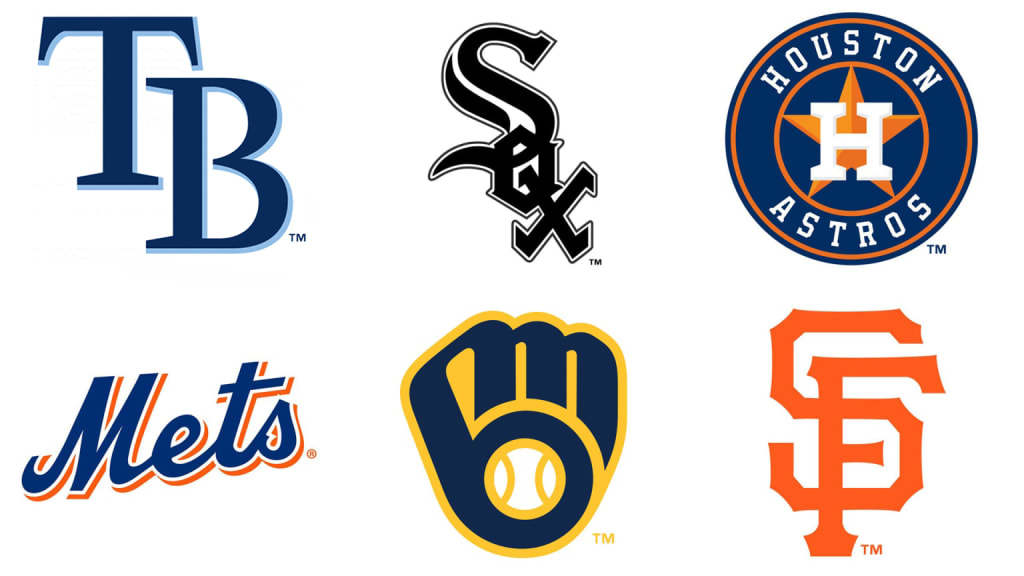
It’s August, the beginning of the stretch run. The Home Run Derby and All-Star Game have come and gone, the Trade Deadline has passed, and playoff implication-laden baseball now takes center stage.
It might feel like if a team isn’t in playoff position right now, it could be time to be worried. But is that true? For teams hoping to win the division, it’s definitely getting close to crunch time.
Let's take a look at what it means to be in first place in a division entering August and what the playoff field may look like.
What it means to be in first place (or not be there)
Since 1996 -- the first full season with at least one Wild Card in each league after the ‘95 campaign was limited to 144 games due to the players’ strike that began in 1994 -- 106 of 144 eventual division champions held at least a share of their division lead entering August 1. That’s 74 percent of division winners.
And of course, the season didn’t start until late July last year, so those numbers are through 2019. The last time we played a full season, in 2019, all six of the division winners held at least a share of that lead entering August. The Yankees, Twins, Astros, Braves and Dodgers each held outright leads. The Cardinals, who won the NL Central, were tied with the Cubs for the division lead entering August. But St. Louis went 34-21 down the stretch, third-best in the NL from Aug. 1 onward, while the Cubs went just 27-28, and the Cards won the division. The Cubs ended up finishing third in the division and missing the playoffs, with the Brewers, who faced the eventual World Series-champion Nationals in the NL Wild Card Game, in second.
The 2019 season was just the fourth time in this span that all six division winners held at least a share of that lead entering August, and it hadn’t happened in a while. The other seasons where it occurred were 1999, '97 and ‘96.
Since 1996, 14 of the 24 World Series winners, excluding 2020 since the season had just began, led their divisions entering August, but the most recent in that span did not: the 2019 Nationals. Before them, the most recent World Series winner without at least a share of first place in its division entering August was the 2014 Giants, who trailed the Dodgers by three games entering August and went on to make the playoffs via the Wild Card.
What about the potential comebacks? Just one team has gone on to win the World Series after being below .500 entering August -- the 1914 Boston Braves, who were 44-45. The lowest winning percentage entering August to win the World Series in the Divisional Era (since 1969) was .528 (57-51) by the 2011 Cardinals.
And if we look at simply making the playoffs? The lowest winning percentage for a team entering August that went on to make the playoffs in a non-strike-shortened season was .436 (44-57) by the 1973 Mets, who went on to win the National League pennant and showed everyone that ‘Ya Gotta Believe.’ (Again we are excluding 2020 with both of these notes).
This year’s leaders and competition
Of this year’s current division leaders entering August, each has had at least a share of that lead entering August (again excluding 2020) since 1996 before. The Rays, who have a half-game lead over the Red Sox after a win Saturday, last led entering August in 2008.
The Mets, who currently lead the NL East, haven’t led entering August since 2007, when they would go on to miss the playoffs despite a seven game lead with 17 games to play.
The White Sox last led entering August in 2012, when they went on to finish in second place behind the Tigers. The Brewers last did it in 2014, when they went on to finish in third place. The Giants were last in this spot in 2016, when they went on to be the second Wild Card spot. This is the fourth straight full season that the Astros have led the AL West entering August.
What’s next?
October is drawing closer -- and fast -- but there’s still baseball left to be played. But fans of the six division leaders can take some comfort in knowing that historically, almost three quarters of those teams have gone on to win their divisions. And for fans of teams that aren’t in a division lead, there’s still plenty of hope -- while 74 percent of these teams go on to win their divisions, that means 26 percent do not, too. Now, we all get to watch and see what happens.
